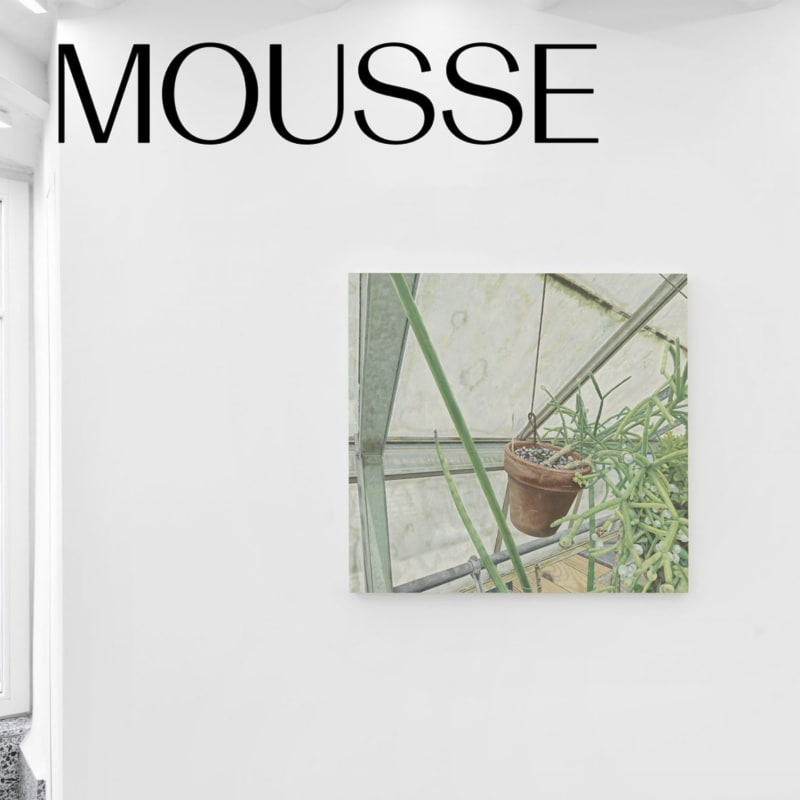Time slows in “Above and Below,” which presents viewers with detailed paintings of the pottery, plants, textiles, and furniture that surround the artist on a daily basis. Among the houseplants he nurtures and the objects he collects, Cline finds ready subjects for creating a world of quiet respite and contemplation. Executed in a restrained color palette dominated by soft blues, browns, and greens, Cline searches for an interior world, seeking shelter from the relentless chaos of the information age.
The still lives in “Above and Below” developed from Cline’s past figural work. His early figurative paintings often focused on a central drama suggesting a larger narrative, one in which plants and objects play secondary roles. But in recent years, a sharpened focus on the marginal aspects of his early works has brought an invigorated freedom to his practice. Without suggestions of overt narrative or references to cultural or historical contexts, Cline has been able to develop a unique visual idiom that finds meaning in texture, light, and form.
Cline’s unusual vantage points and evident eye for the quotidian are reminiscent of the haphazard compositions of vernacular photography. Eschewing details that root his paintings in a specific time or place beyond the domestic interior, Cline opts to focus on the formal and material details present in his subjects, such as dust, textural eccentricities, and lighting. Moreover, each canvas is stippled to produce a sandpaper-like surface suggesting haze in each image. The emphasis of texture and light over color’s saturation brings an intensity to the paintings that makes the modest objects appear as though they are vibrating, imbued with a surplus of energy that can never fully manifest.

